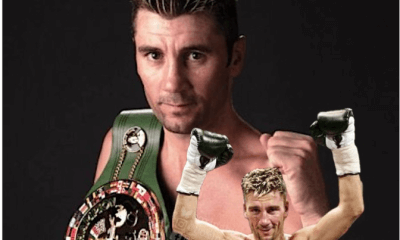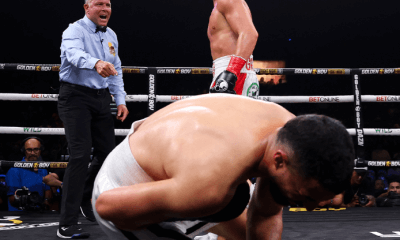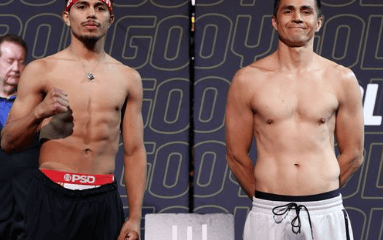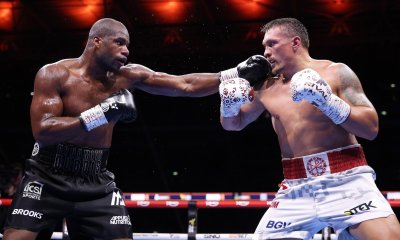Featured Articles
Deontay Wilder’s Hall of Shame
Deontay Wilder’s Hall of Shame
This is a look at the title opposition of one Deontay Wilder, America’s great heavyweight hope and currently ranked number
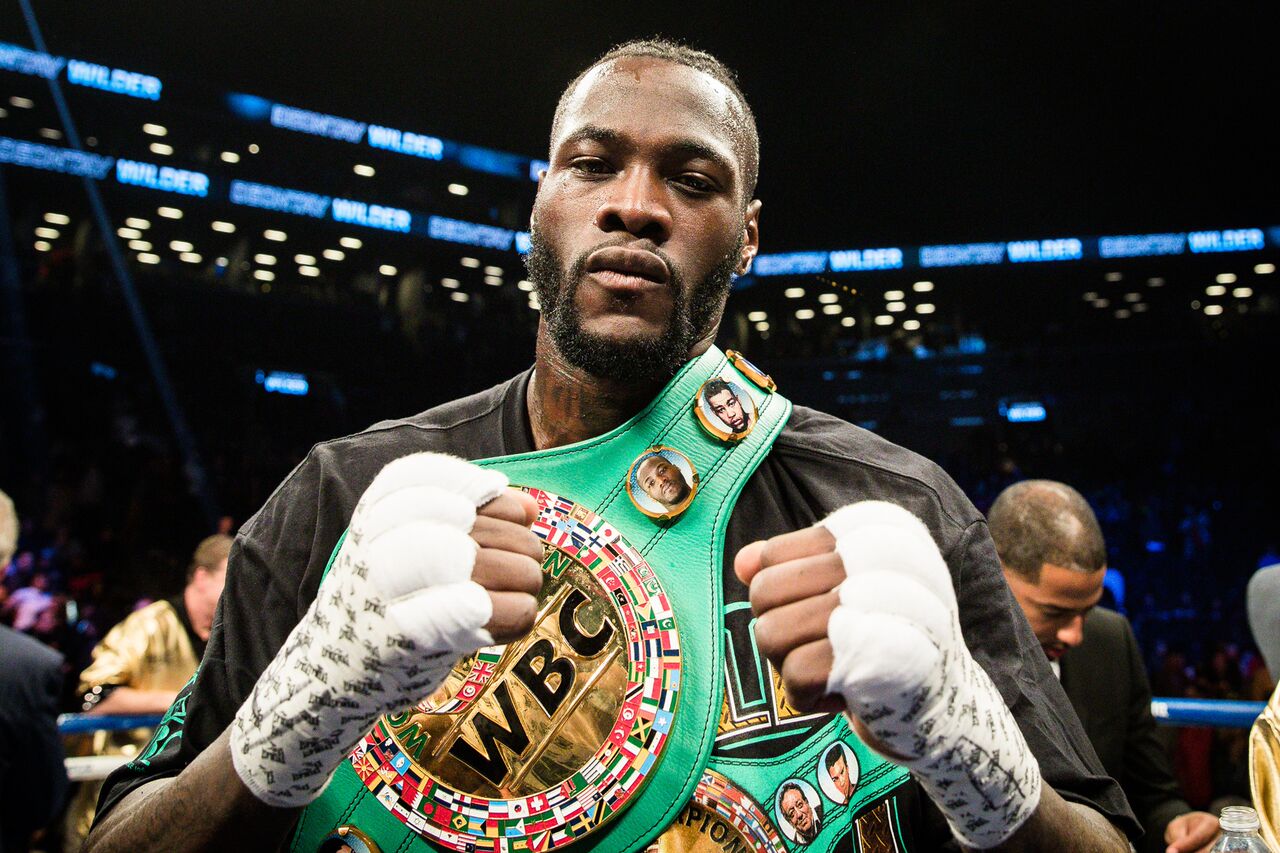
Deontay Wilder’s Hall of Shame
This is a look at the title opposition of one Deontay Wilder, America’s great heavyweight hope and currently ranked number two in that flagship division.
What it is not is a critique of the WBC’s rankings policy. It could easily be interpreted as such; we are told time and time again that the reasoning behind a given fight is only that it is “mandatory” and therefore has to be fought.
It is a wonder that any competitive fights get made at all, this being the case.
This is also not an accounting of Wilder’s apparent bad inflatable slide luck in attempting to make stiffer matches for himself. It is an examination of what has actually happened rather than what someone tried to do.
I admit that it doesn’t make for pretty reading, but horror rarely does.
All rankings are by the TBRB; other independent ranking organizations are available – and they don’t seem to see things any differently.
ERIC MOLINA (23-2), 1st Defense, June 2015.
I am not a total skeptic when it comes to soft opposition; “one for me, one for you” is a reasonable approach I think, and Wilder took on his only ranked opponent to date when he met Stiverne for the WBC trinket in early 2015. A more limited opponent seemed a reasonable move to me, and the Texan, Eric Molina, qualified.
Chris Arreola was in a strange place in his career in 2012. Having failed in his attempt at a heavyweight strap against Vitali Klitschko in 2009 and then lost to former cruiserweight belt-holder Tomasz Adamek in 2010 he had hit the road on what amounted to an old-fashioned barn-burning tour in boxing outback against his own selection of limited opposition. This culminated in a ten round decision win over a heavyweight named Friday Ahunanya, a once promising Nigerian heavy who had just dropped a six-rounder to a professional loser called Cisse Callif.
When the result of this fight was later changed to a No Contest when Arreola failed the drugs test (marijuana), I think it’s fair to say that the once proud Mexican-American had reached his career low. It is understandable then that Molina was excited to be matched with him in February of 2012. This excitement did not last long. Molina was blasted out in 150 seconds.
These things happen in boxing, and Arreola was capable of making them happen so it was fitting that Molina be afforded the chance to rebuild. Between this first round knockout defeat and his June 2015 meeting with Wilder, Molina had five fights. He met no ranked contenders. In fact, he met no fighters of note outside of a 45 year old DaVarryl Williamson who hadn’t boxed for two years and who was rescued from himself in the fifth. Molina stooped lower in his next contest, beating up the 10-12-2 Theo Kruger. After one more outing he was apparently “ready” to meet Wilder with the belt on the line.
Molina was not a bad fighter and he actually landed some good shots on the belt-holder on his way to being stopped in the ninth, lasting eight rounds longer than he had against Arreola. That being said, he was also woefully under-qualified for championship boxing. Still, as I said, a soft one is reasonable after lifting the title. The real question was the eternal one – who’s next?
Who should he have fought instead? Vyacheslav Glazkov, pre-injury, ranked seven.
JOHANN DUHAUPAS (32-2), 2nd Defense, September 2015.
To his tremendous credit, Wilder was out quickly but the man in the other corner once again underwhelmed.
Frenchman Johann Duhaupas was big with a big reach but the headline in assessing him as an opponent for Wilder was his twelve round points loss to novice Erkan Teper in March 2015. Their fight was turgid, honest (although Teper did have a point deducted for pushing) and in no way controversial; cards of 116-111 twice and 115-112 in favor of Teper were a fair reflection of the contest.
Maybe, at the absolute limits of what is acceptable, Teper could have reasonably have been favored with a shot at Wilder’s trinket, especially after his next fight, a two round battering of David Price. But it was Duhaupas , the loser of that contest that would get to meet Deontay.
Welcome to Wilder territory.
Between Teper and his title match, Duhaupas was able to put a veneer of respectability on his shot with a narrow majority decision victory over Manuel Charr. Charr was a legitimate opponent and I thought Duhaupas handled him reasonably well, especially early, edging away and walking his opponent onto a decent jab, lobbing in the occasional ill-directed right when he felt it was safe to do so.
Still, once again, Charr was not a ranked opponent; he was a gatekeeper, the type of fighter whose defeat would open up for the victor a fight with a ranked opponent, the defeat of whom might in turn open up an elimination bout against a top contender. Not in this instance. In this instance, a loss to a novice and a hairline victory over a gatekeeper got Duhaupas into a ring with Wilder.
It wasn’t pretty.
Who should he have fought instead? Carlos Takam, ranked six.
ARTUR SZPILKA (20-1), 3rd Defense, January 2016.
Artur Szpilka is my favorite Deontay Wilder opponent and I will go so far as to say that had Wilder fought a ranked man in September, this would have been a reasonable outing in January.
Szpilka was a quick southpaw who made up for his dearth in reach with a shifting style and good arbitrary head movement. The problem with his status as a title-challenger, aside from an absence of a top ten ranking, was his defeat two years earlier to Wilder’s chief domestic rival Bryant Jennings. Jennings had taken the high road to Wilder’s low road, crashing himself upon the rock that was Wladimir Klitschko where Wilder preferred the weakest of the available “champions” in Stiverne; fair to say, Jennings paid for his bravery, never being quite the same again after his meeting with Doctor Steelhammer. Against Szpilka, though, Jennings had looked excellent, winning nearly every round on his way to a stoppage victory in the tenth.
Szpilka’s return was not the preferred route of prospective Wilder title-challengers though, and he even found time to defeat a legitimately ranked opponent in Tomasz Adamek. His first two opponents of 2015 were more in keeping with those favored by Wilder’s challenges in Ty Cobb (18-6) and Manuel Quezada (29-9 and on a five fight losing streak) and these victories, combined with a two round victory over Yasmany Consuegra who blew out his knee in the second were good enough to make the match with Wilder.
It is worth keeping in mind that this bizarre combination of opposition likely made Szpilka Wilder’s most legitimate opponent. Unsurprisingly it therefore made for his best match, too, as well as his key learning fight. Szpilka’s style made Wilder a little uncomfortable and the Pole won several rounds before Wilder closed the blinds in what remains, for me, his most impressive knockout.
Who should he have fought instead? Szpilka’s first conqueror, Bryant Jennings, ranked ten.
CHRIS ARREOLA (36-4-1), 4th Defense, July 2016.
Wilder’s fourth defense against Chris Arreola was probably his most cynical. Arreola had name recognition to recommend him and little else. A perfectly reasonable opponent for a young prospect, he was no more a legitimate title challenger than I am, having recorded two wins in his previous six contests.
This underlines the problem with handing out baubles to fighters who are not yet ready to properly defend them: it takes a devalued property and gives it to a fighter who will happily devalue it further while making money.
After that one round blowout of Molina, Arreola matched Bermane Stiverne and was somehow installed as a prohibitive favorite. Stiverne promptly broke his nose and pounded out a decision win. Arreola saved himself from a descent into obscurity with another first round knockout, this time over Seth Mitchell, but the taste of that Stiverne defeat would not go away and he demanded and received a rematch. This time he was stopped in six. Arreola then fought a really fun fight with an unknown called Curtis Harper, earning himself an eight round decision and a short reprieve from obscurity, but much of this work was undone when he found himself on the lucky end of a ten round draw with Fred Kassi.
Then Arreola met Travis Kauffman.
Kauffman was exactly the sort of opponent Arreola should have been meeting at that point in his career. Kauffman had just moved on from facing professional losers with records like 10-21 or 19-22-3 and on to genuine tests, fighters who were coming to win but might not be expected to for whatever reason – in short, Arreola was now a trial horse. To give him his due, he got himself in shape for Kauffman, but was caught with a crackling up and down combination in the third and dropped. Drawing upon all his experience he forced Kauffman into the type of tough combat often seen in the netherworld where busted flushes show against drawing hands and with both men exhausted down the stretch he made it close – two cards reading 114-113 in his favor bought him the split, though my card read the same as the odd judge, who saw it by the same score in the other direction.
Regardless, the fight was changed to a No Contest after Arreola failed another drug test.
Of course he got a fight with Wilder.
Who should he have fought instead? Anyone.
GERALD WASHINGTON (18-0-1), 5th Defense, February 2017.
At the time of his meeting with Gerald Washington, Wilder was ranked the number four heavyweight in the world and was heralded the world champion by the WBC. Gerald Washington was a prospect. A prospect in his mid-thirties, so a prospect in a rush, but a prospect none the less.
Washington’s three-pronged arrival in 2015/16 heralded a fighter of no little talent who carried all the foibles any heavy of his inexperience can be expected to exhibit. Against the sawn-off aggressor Amir Mansour he looked genuinely excellent early before floundering against his more seasoned opponent down the stretch. He was lucky, in my view, to escape with the split draw the judges found for him but it was an excellent learning fight for a man who at a lean 250lbs looked the part.
Next up was a true veteran in Eddie Chambers. Here, I thought Washington was probably good for his eight round decision win but it was bizarre to watch a man with such a pronounced size advantage work so hard to avoid exchanges. More bizarre still was the huge number of punches both men missed. It is rare that such inaccuracy is televised.
I’ve never seen him beat up the bloated ghost of the fighter who had once been Ray Austin but that was the shambolic elimination for his meeting with Deontay Wilder. Wilder staged a predictably one-sided blow-out over five.
Who should he have fought instead? Dillian Whyte (10), Christian Hammer (9), Andy Ruiz (8) or Kubrat Pulev (6).
BERMANE STIVERNE (25-2-1), 6th Defense, November 2017.
To be fair to Wilder, Bermane Stiverne was a substitute opponent for Luis Ortiz, who failed a drug test. It is also fair to point out that when Wilder’s British counterpart Anthony Joshua lost his opponent, world number six contender Kubrat Pulev on short notice, he substituted world number seven contender Carlos Takam.
That, as they say, is how it’s done.
It is also worth pointing out that Stiverne was due to fight on the Wilder-Ortiz undercard with a view to stoking and then staging the rematch nobody wanted to see early next year anyway. While that percolates, consider, too, that Stiverne had somehow remained a WBC top contender despite the fact that he has fought only once in the three years since Wilder pounded out a wide, dull decision over him. He fought 30-10 Audley Harrison victim Derric Rossy and was extended the full ten rounds.
Stiverne, like all these opponents, did nothing to earn a ranking on a reasoned, independent organization’s top ten at heavyweight. All of them were deeply, deeply flawed as title opponents. It is true that Wilder has been unlucky in cornering quality opposition, but it is also true that he is the number two draw in heavyweight boxing and if his representatives want to get low-key quality opposition to America to test him, it is just a matter of paying.
If they prefer to corner fan dollars while lining up victims, that is their choice and as a road to riches it is as tried and tested as fighting the best. But what must be remembered, as negotiations begin in earnest for the Joshua-Wilder showdown this coming year, is that this policy has left Joshua’s people with far and away the stronger hand.
It is Joshua who has bested by far the better opposition. He has beaten four ranked men in his 20 fights – Charles Martin (9), Dominic Breazeale (9), Wladimir Klitschko (1) and Carlos Takam (7) – while Wilder has managed one in his 39 (Bermane Stiverne; 6).
In matters not unrelated, Joshua is commanding purses between $13m and $19m while Wilder cleared as little as $1.4m dollars for his most recent contest.
To be clear, Wilder’s call for a 50/50 split in any fight between the two is ridiculous at best and dishonest at worst; it is likely that if Wilder is assigned 25% of the take (and he will, and should, get more) then it will represent a payday in wild excess of anything he has ever earned.
There’s no fooling boxing. One way or the other you get what you deserve.
Photo credit: Amanda Westcott
Check out more boxing news on video at The Boxing Channel
-

 Featured Articles2 weeks ago
Featured Articles2 weeks agoResults and Recaps from New York Where Taylor Edged Serrano Once Again
-

 Featured Articles2 weeks ago
Featured Articles2 weeks agoResults and Recaps from NYC where Hamzah Sheeraz was Spectacular
-

 Featured Articles3 weeks ago
Featured Articles3 weeks agoFrom a Sympathetic Figure to a Pariah: The Travails of Julio Cesar Chavez Jr
-

 Featured Articles2 weeks ago
Featured Articles2 weeks agoPhiladelphia Welterweight Gil Turner, a Phenom, Now Rests in an Unmarked Grave
-
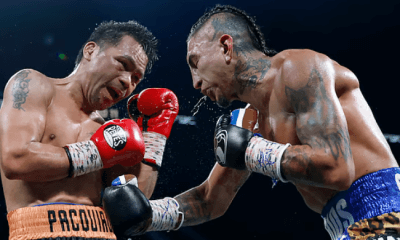
 Featured Articles7 days ago
Featured Articles7 days agoManny Pacquiao and Mario Barrios Fight to a Draw; Fundora stops Tim Tszyu
-

 Featured Articles3 weeks ago
Featured Articles3 weeks agoCatterall vs Eubank Ends Prematurely; Catterall Wins a Technical Decision
-
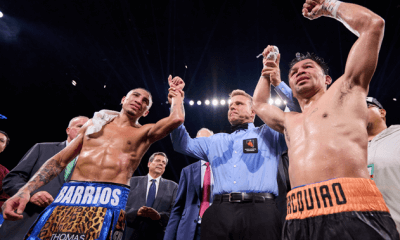
 Featured Articles5 days ago
Featured Articles5 days agoArne’s Almanac: Pacquiao-Barrios Redux
-
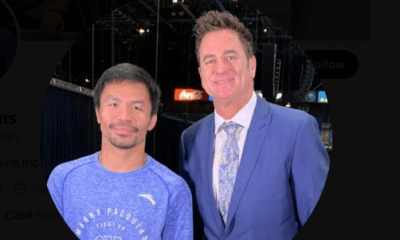
 Featured Articles2 weeks ago
Featured Articles2 weeks agoFrom the Boondocks to the Big Time, The Wild Saga of Manny Pacquiao’s Sidekick Sean Gibbons


